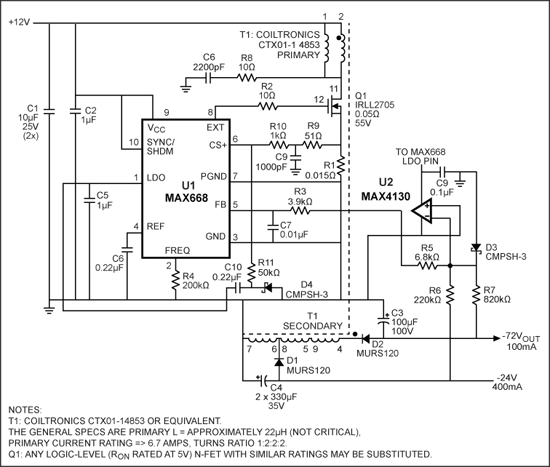Extending Soft-Start
要約
Design note shows how to extend a soft-start period. Four external components extend the soft-start of a step-up controller. The MAX668 controller, MAX1856 power supply, and MAX4130 op amps are featured.
Additional information:

Figure 1. This circuit uses the MAX668 and a transformer (which will need about a 1:2:2:2 turns ratio) to make a flyback converter. The op amp inverts the feedback from both negative output voltages.
In systems where cards are hot-plugged, it is desirable sometimes to extend the soft-start period beyond the time provided in the IC in order to control the surge current at turn-on. The circuit above uses four external components to extend the soft-start period of the MAX668 (the technique also applies to the MAX1856 inverting transformer flyback controller).
C5 is a bypass capacitor for LDO and part of the standard circuit. R1 is the current-sense resistor. R9 and C9 filter the switching noise from the current-sense signal. In normal operation, the LDO output is 5V. The switching frequency is set to 250kHz, and the internal soft-start is 1024 clock cycles, or 4ms.
R10 and R11 are added to force the current-sense input, CS+, into current limit (+100mV). C10 is the timing capacitor that works with R10 to decrease the extra voltage applied to CS+ over a period of time. As the extra voltage decreases, the allowed current limit increases. Therefore, in this example, the current limit is increased from zero to 90% of full scale over a 33ms period (3 x R10 x C10). The soft-start period is modified by changing C10. When power is removed, D4 resets the voltage on C10.